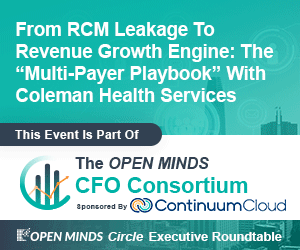“Marketing” has always been a discipline (and an investment) that has not been “top of mind” in health and human services. How provider organization executive teams perceive the role of marketing differs among non-profit organizations and for-profit organizations—though I’ve found that neither group makes it a key strategic priority. On the for-profit side, my experience…
[caption id="attachment_868755" align="alignleft" width="150"] Melissa Fors[/caption]
As the behavioral health field becomes more competitive, marketing competency separates key market players from less successful organizations. When reviewing the performance of an organization, a few important questions emerge: how are organizations focused on marketing, what are the key performance indicators (KPI), and what is their overarching…
[caption id="attachment_870280" align="alignleft" width="150"] Judi London, Chief Strategy Officer, Bancroft[/caption]
The health and human service market has moved from being “just” a highly-regulated model to a competitive model, which has called on many different kinds of organizations to rethink their approach to marketing (see How To Develop A Successful Marketing Plan: The OPEN MINDS…
[caption id="attachment_869731" align="alignleft" width="150"] Paul Bacharach, President & Chief Executive Officer, Gateway Rehab[/caption]
Health and human service provider organization marketing teams are slowly shifting from a traditional approach to organizational promotion to one that finally relies, like most consumer-oriented fields in the United States, on shifting to a dedicated online presence and digital marketing…
When I work with provider organizations to “teach” marketing, I share a simple explanation for what “marketing” actually is: it is the overlap between the customers (both payers and consumers) and the service provider organizations. Your marketing strategy, which should be based on creating and offering some kind of “value” to your customers, will serve…
The majority of the population in the state of Tennessee is enrolled in a commercial health insurance plan (54%)—this is below the national average of 58%. About 18% of the population is enrolled in Medicaid, which is close to the national average of 17% (to learn more about the state’s health care system, Elite OPEN…
The majority of the population in the state of New Jersey is enrolled in a commercial health insurance plan (62%)—this is above the national average of 56%. About 15% of the population is enrolled in Medicaid, which is slightly below the national average of 17% (to learn more about the state’s health care system, Elite…
The majority of the population in the state of Wisconsin is enrolled in a commercial health insurance plan (65%)—this is above the national average of 56%. About 12% of the population is enrolled in Medicaid, which is below the national average of 17% (to learn more about the state’s health care system, Elite OPEN MINDS…
The majority of the population in the state of Kentucky is enrolled in a commercial health insurance plan (54%)—this is below the national average of 56%. About 21% of the population is enrolled in Medicaid, which is above the national average of 17% (to learn more about the state’s health care system, Elite OPEN MINDS…






